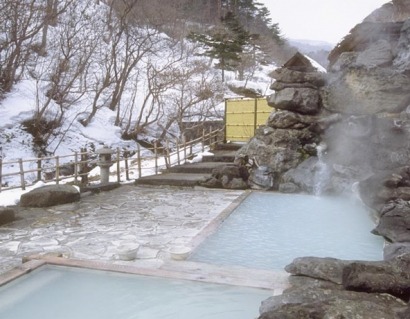
The hot spring resort known as Tsuchiyu Onsen, located in Fukushima City, will be the first Japanese national park to have a geothermal power plant constructed within its borders. Not only will the new plant help plug Japan’s post- Fukushima energy gap, but it will also help monetise the hot springs, which have experienced a sharp decline in tourist numbers since the nuclear crisis last year.
The Tsuchiyu Onsen geothermal plant will initially have an output of 500 kilowatts, although that is expected to be increased to 1 megawatt at a later time, and is expected to begin operations in October.
The new power plant will employ a binary cycle system, whereby the heat from hot spring water will be used to convert low boiling point liquids, such as ammonia, to steam to drive a turbine. Local sources reveal there are limited locations in Japan that can offer the ideal conditions of enough hot spring water, and high enough temperatures to provide the level of power required to run a geothermal plant of this kind, which perhaps explains why the Environment Ministry decided to give the Tsuchiyu Onsen plant the go-ahead, despite lying in a national park
Output from the new facility will be sold to Tohoku Electric Power Co. at 42 yen per kilowatt (a price set by a new system introduced this month obliging power companies to buy renewable energy at fixed prices), enabling the resort to recoup the 300 million yen (approximately $3.8 million) development costs in roughly seven years. The revenue will also be used to acquire electric buses in an attempt to boost tourism again in the area.
According to the Environment Ministry, as geothermal power generation is not affected by the weather, it can produce up to seven times more power than solar energy, even if the output capacity of the two methods is equal.
For additional information:

